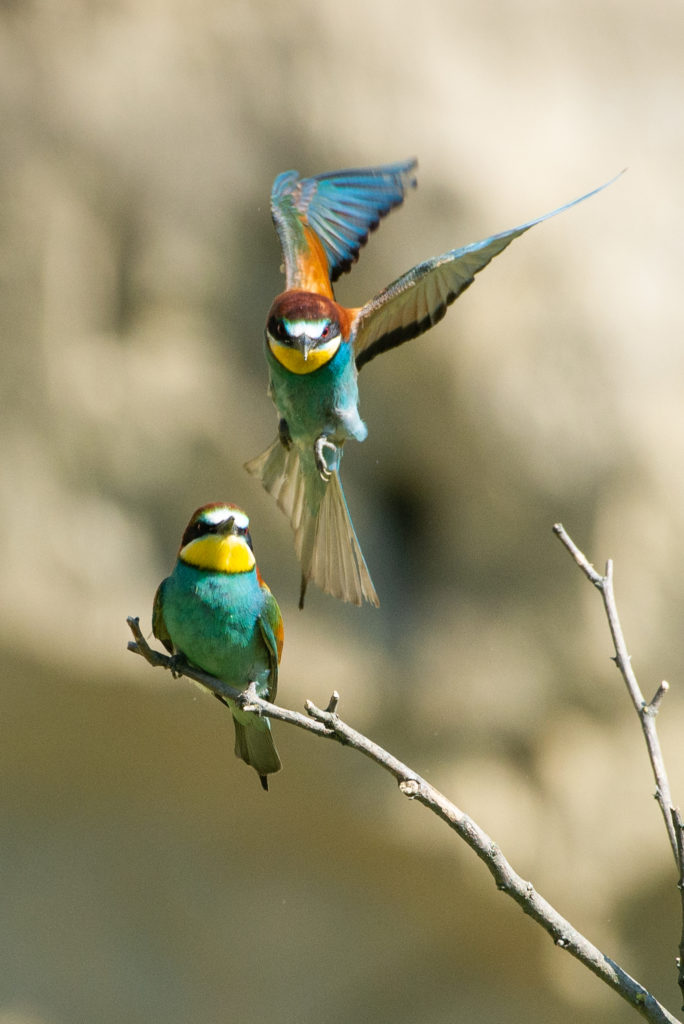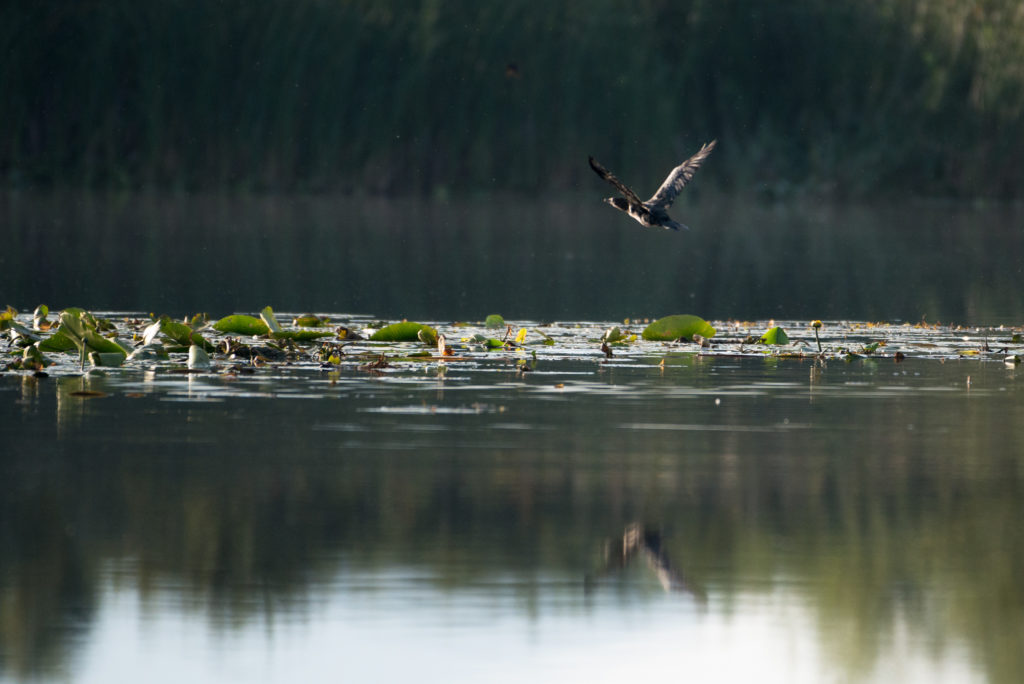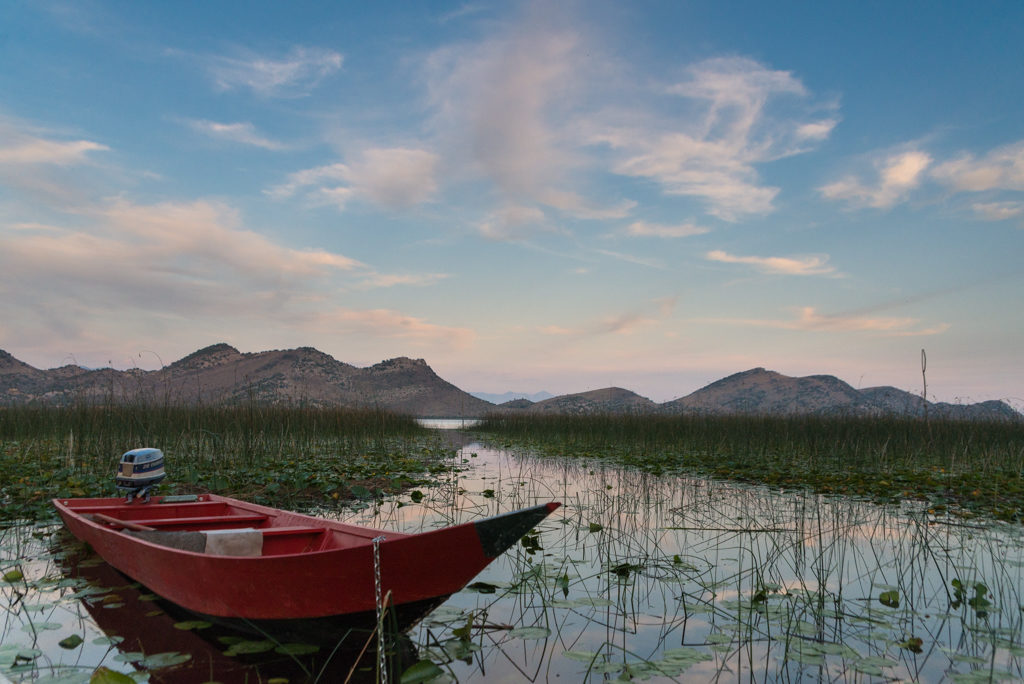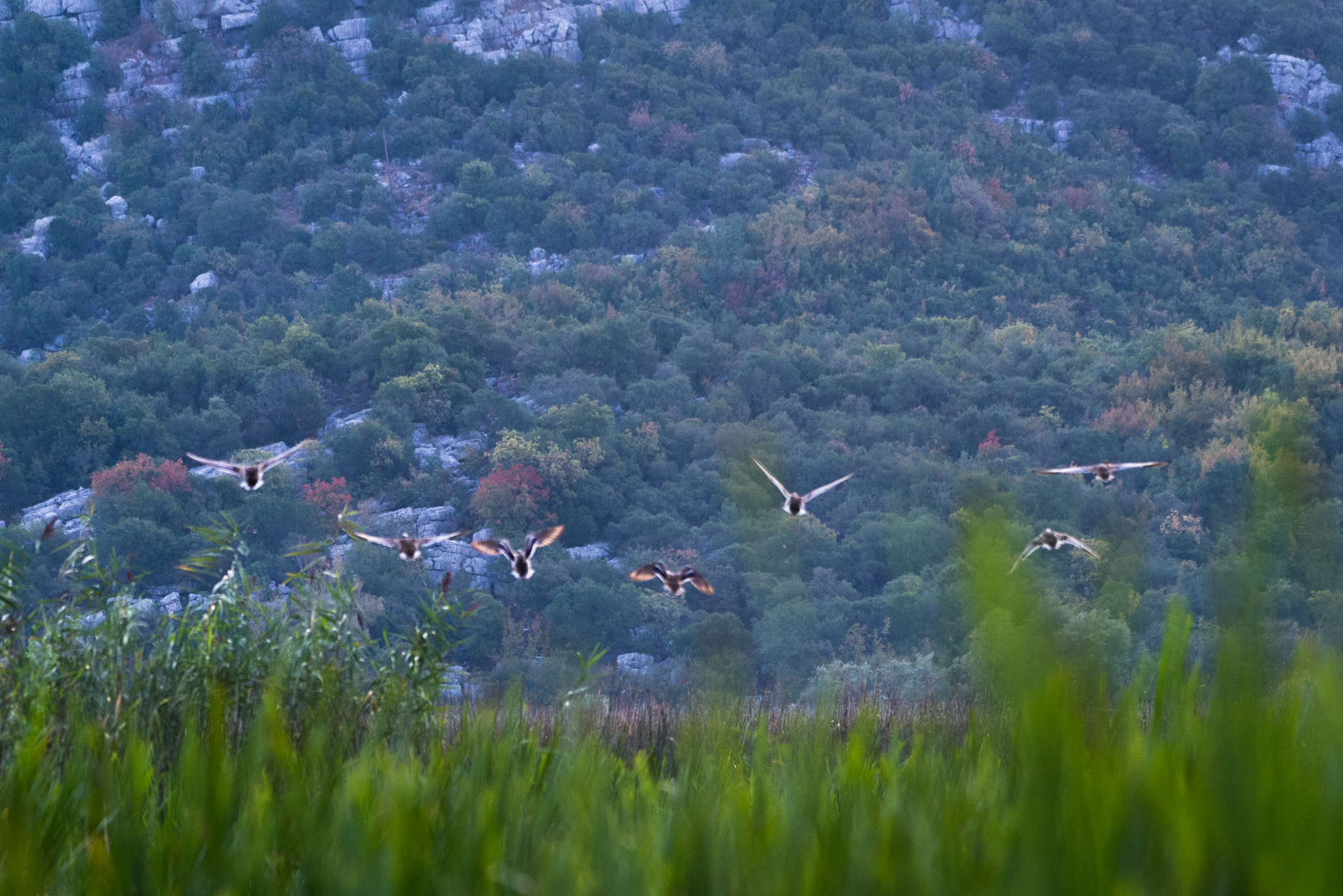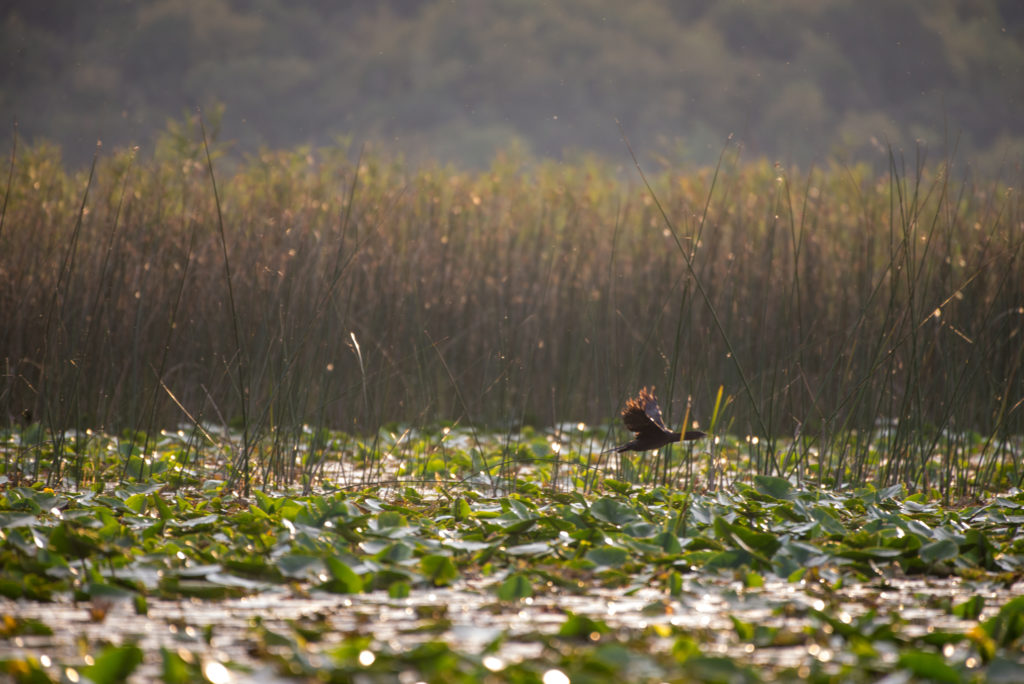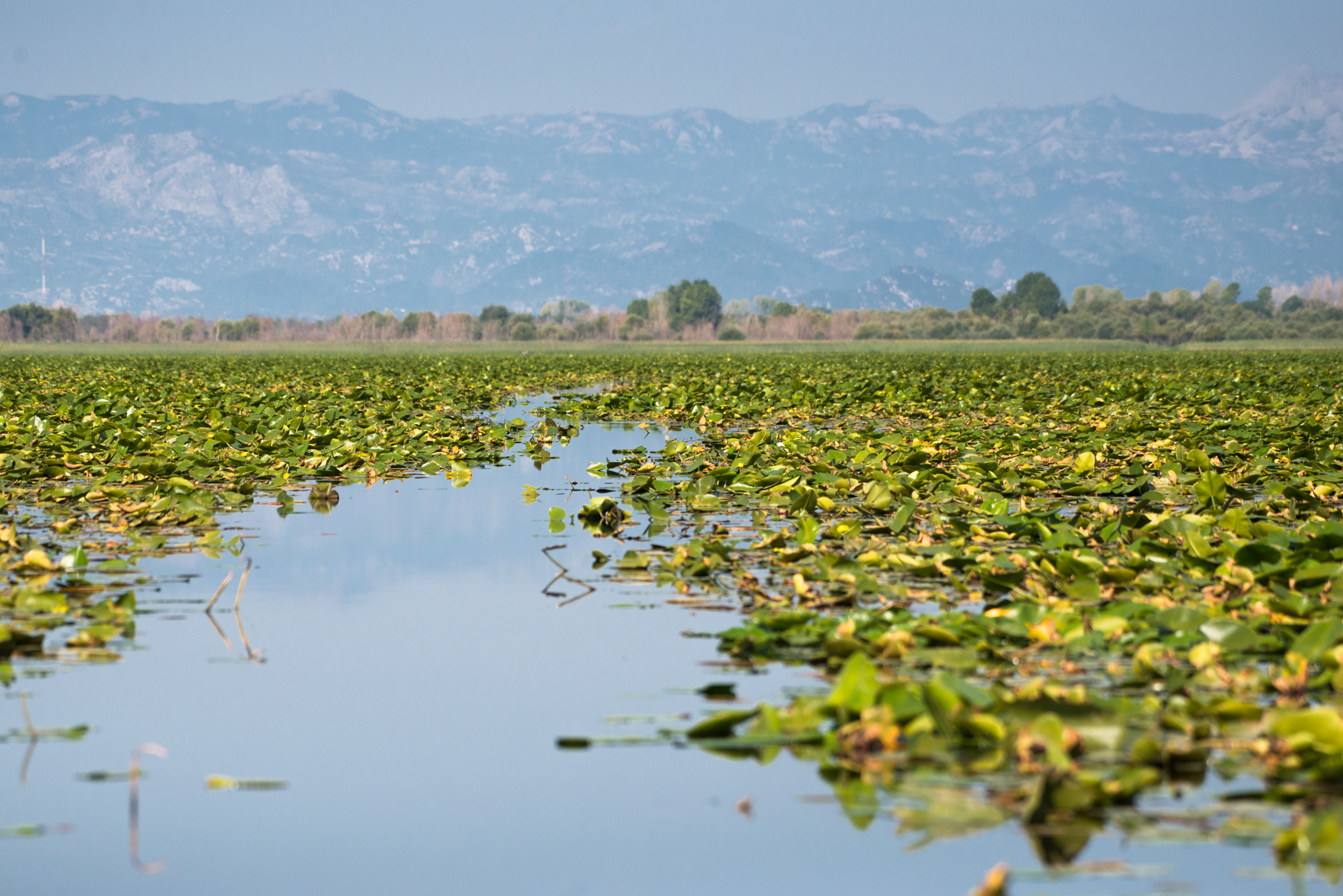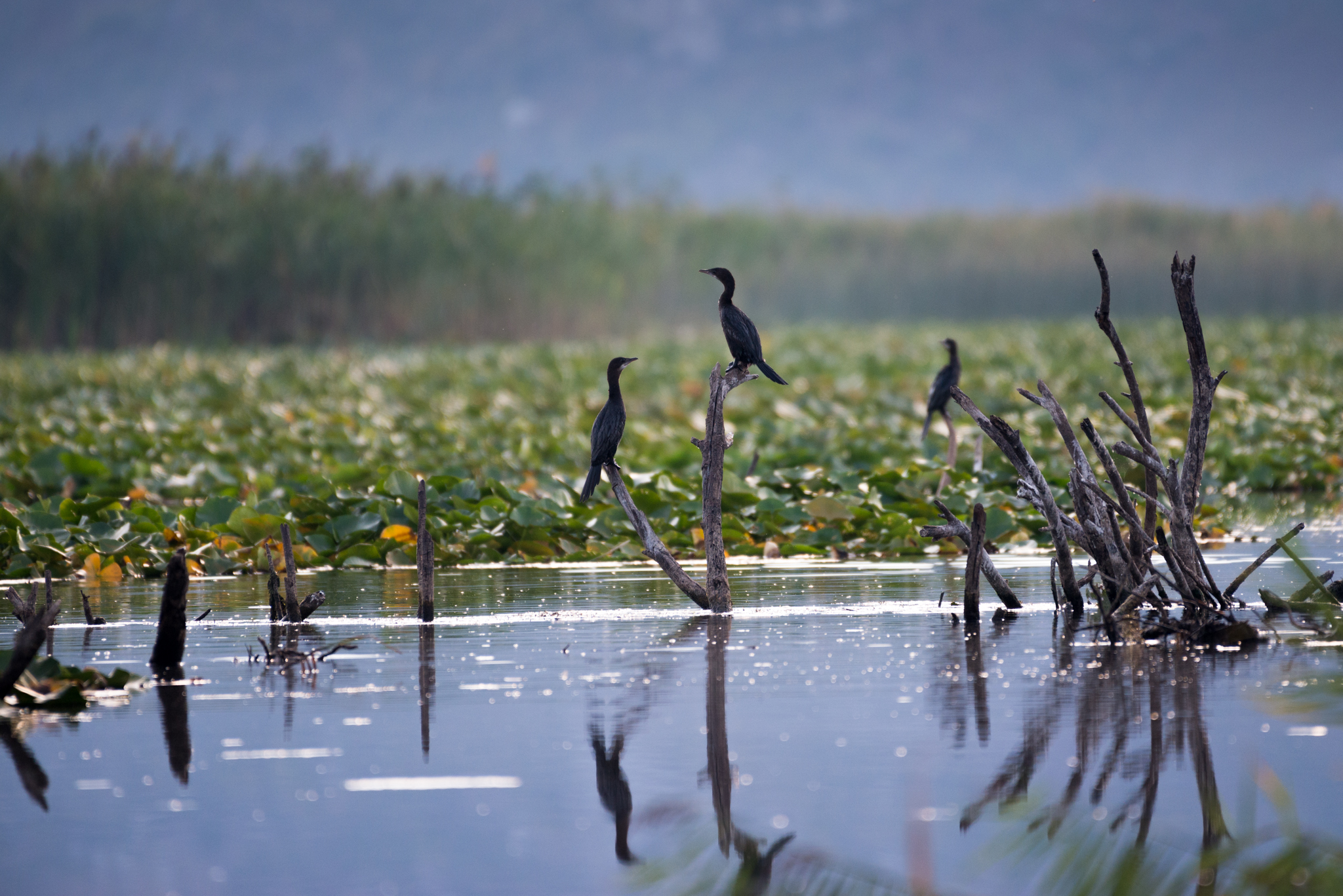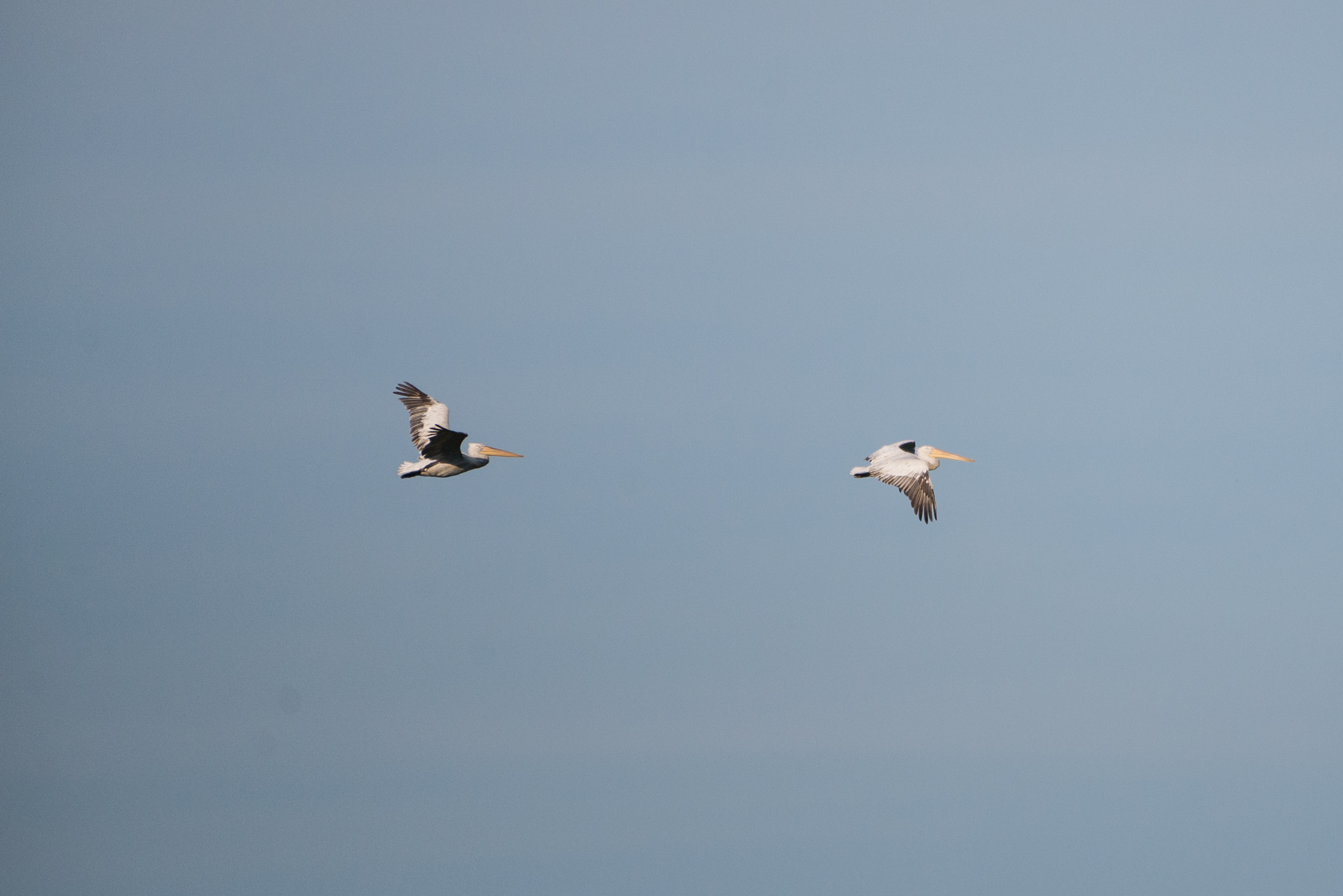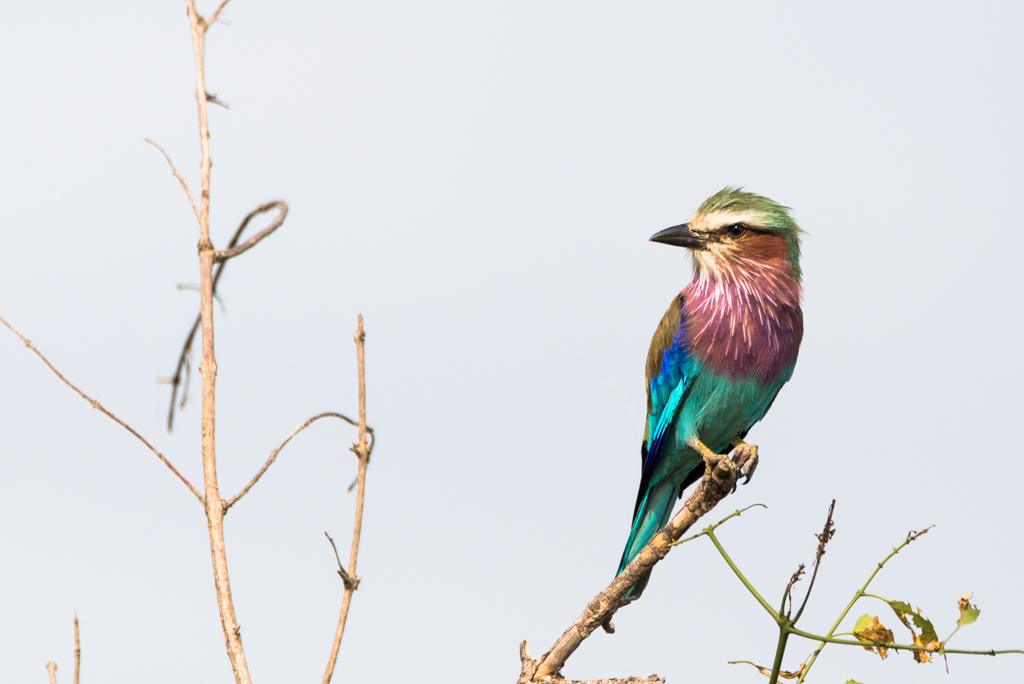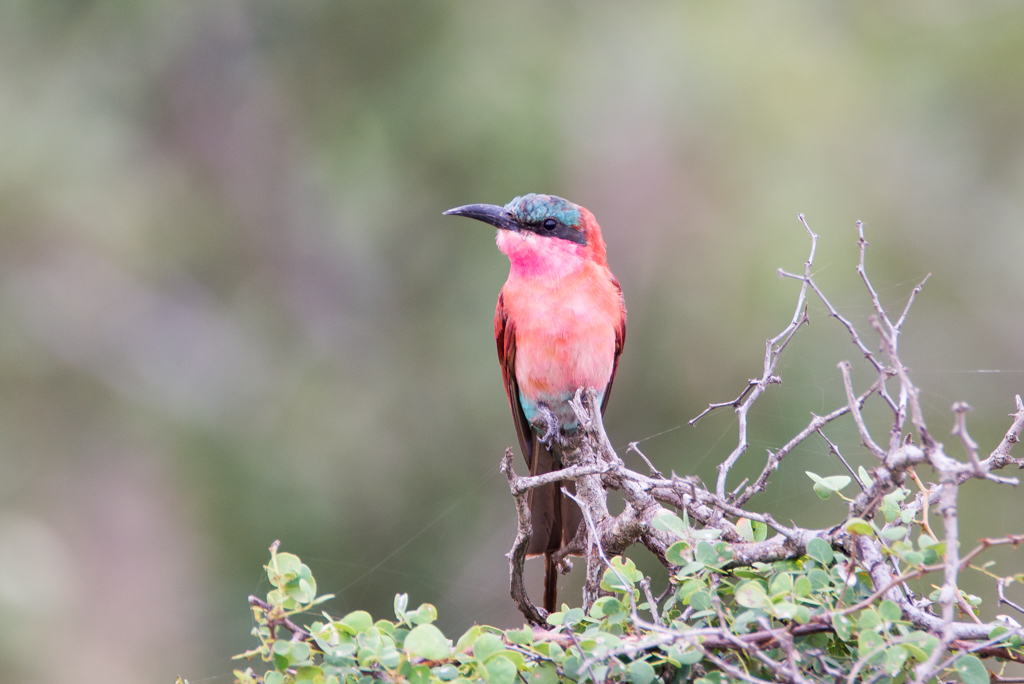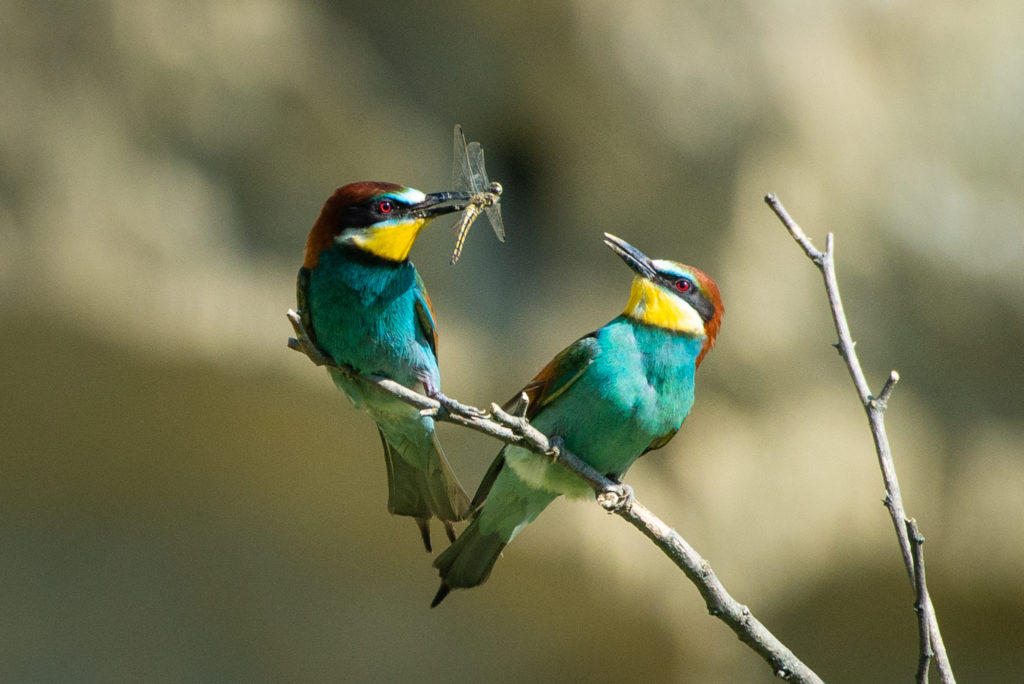
It’s this time of the year again: The bee-eaters, those agile, gregarious birds, have returned from South Africa and set up shop at Lake Neusiedl. By means of their sharp bills they dig their burrows up to two meters into the vertical sand stone, completely ignoring the burrows they had carved out the previous year. It’s in their nature to build a new home each June.
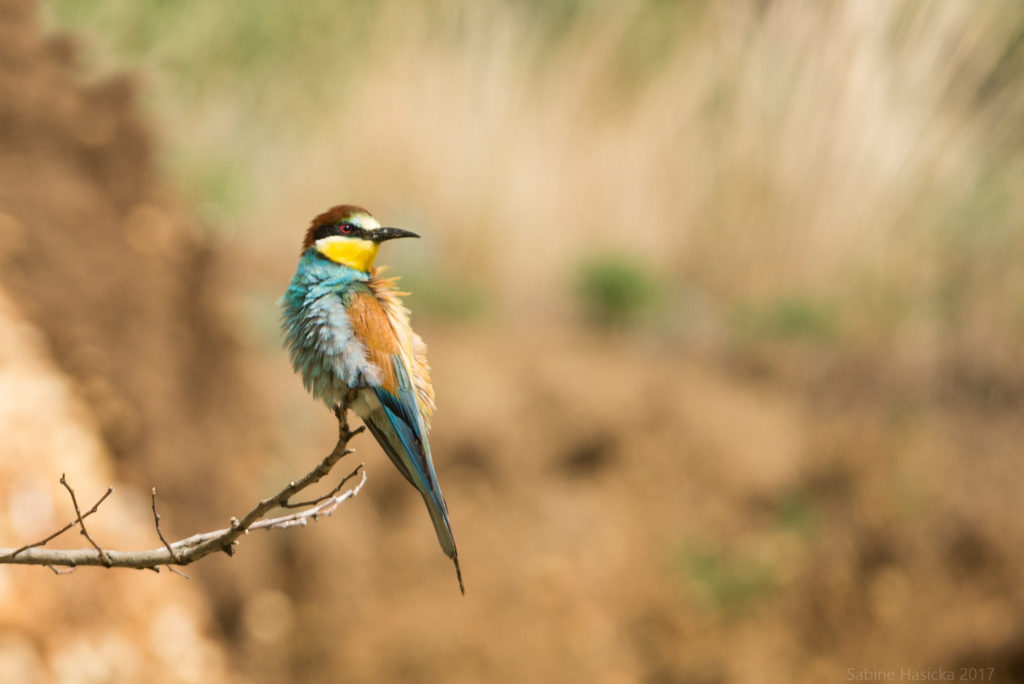
It’s not in their nature to find new partner, though. Bee-eaters mate for life. Their romantic fidelity has inspired poets and biologists alike. Albeit, their sex lives aren’t as straight forward as it may seem. Both husband and wife like to engage in extra-marital affairs to further their own offspring’s chances of survival, turning the colony into a stage for a veritable Ronde à la Schnitzler.
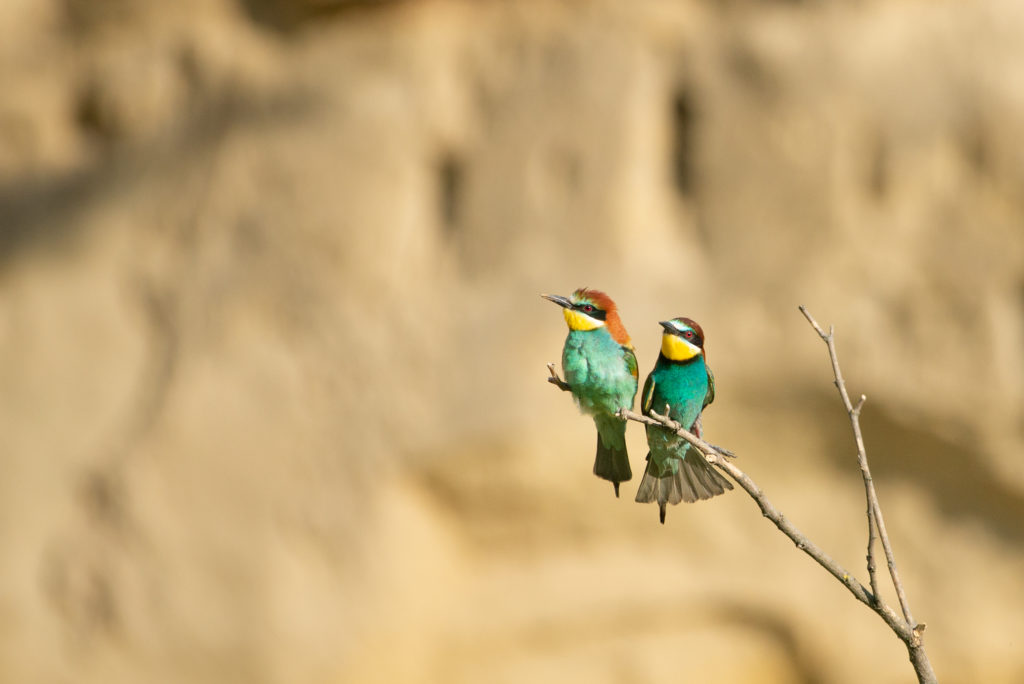
Courtship follows an elaborate protocol. The groom presents the bride with a present – a bee or a dragonfly or even a butterfly, the avian equivalent to a bouquet of roses. After a little cuddling, the female will assume a receptive posture, after which the consummation of marriage will take place. Then both will joyfully take to the skies. Love is in the air!
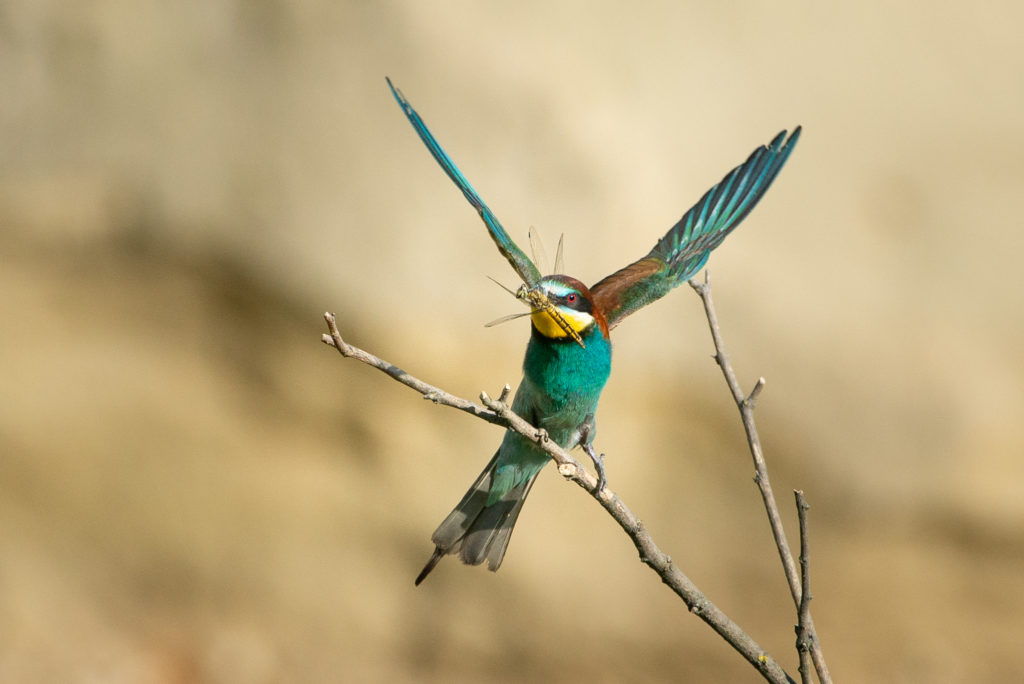
However, monogamy is often limited to “social monogamy” – the shared raising of the hatchlings. Copulation often happens in the hidden, sometimes it’s forced, and sometimes it doesn’t happen at all.
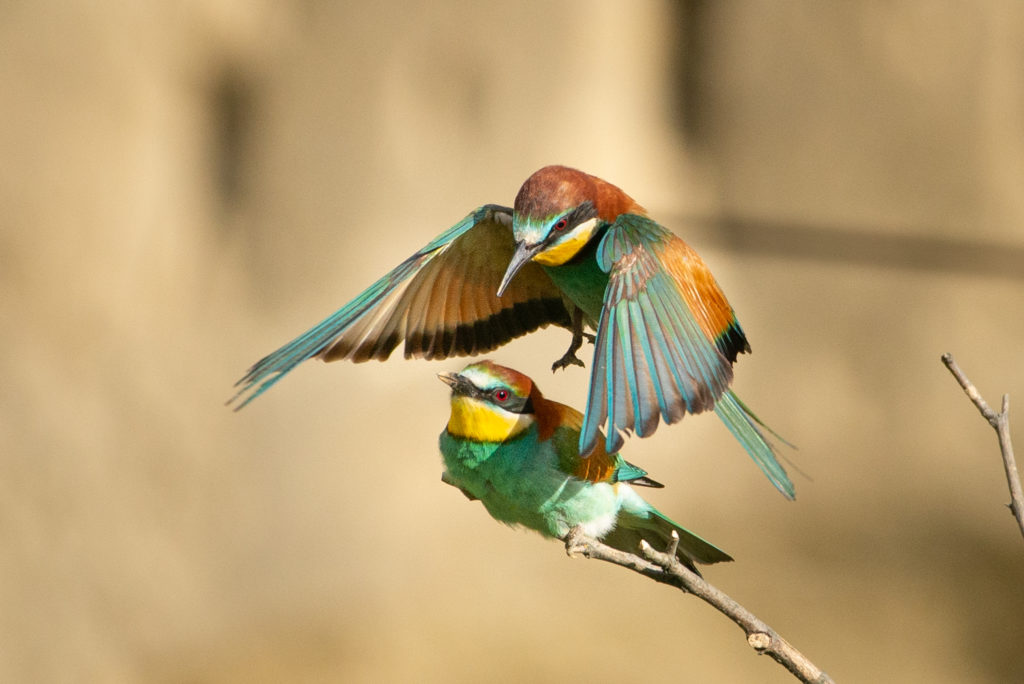
A couple usually enlists other birds as babysitters, most preferably their own children. If the latter however wish to start their own family, the old couple will go to extraordinary lengths to prevent them from mating. The daughter in turn will sneak out in the wee hours of the day to find herself a secret lover.
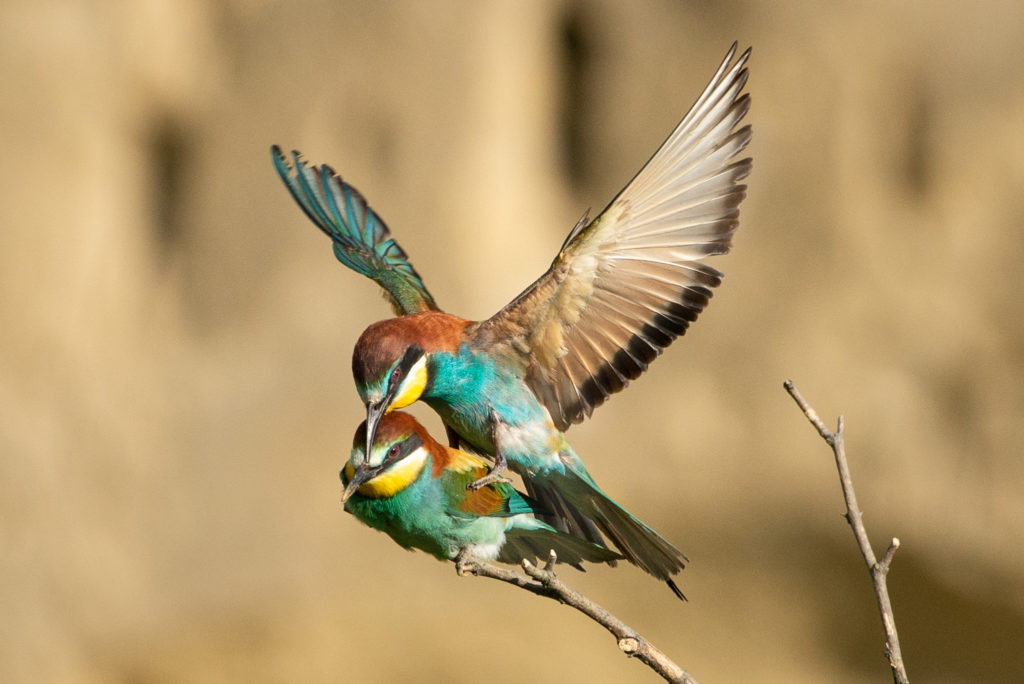
In general, as recent studies have shown, a lot of extra-marital sex in the world of birds is in fact instigated by females. Married males will not shy away from a little tete-a-tete, especially if they don’t have to take care of the hatchlings later. On a darker note: bachelors who haven’t managed to impress a female will resort to drastic measures to get their DNA spread: coercion and rape.
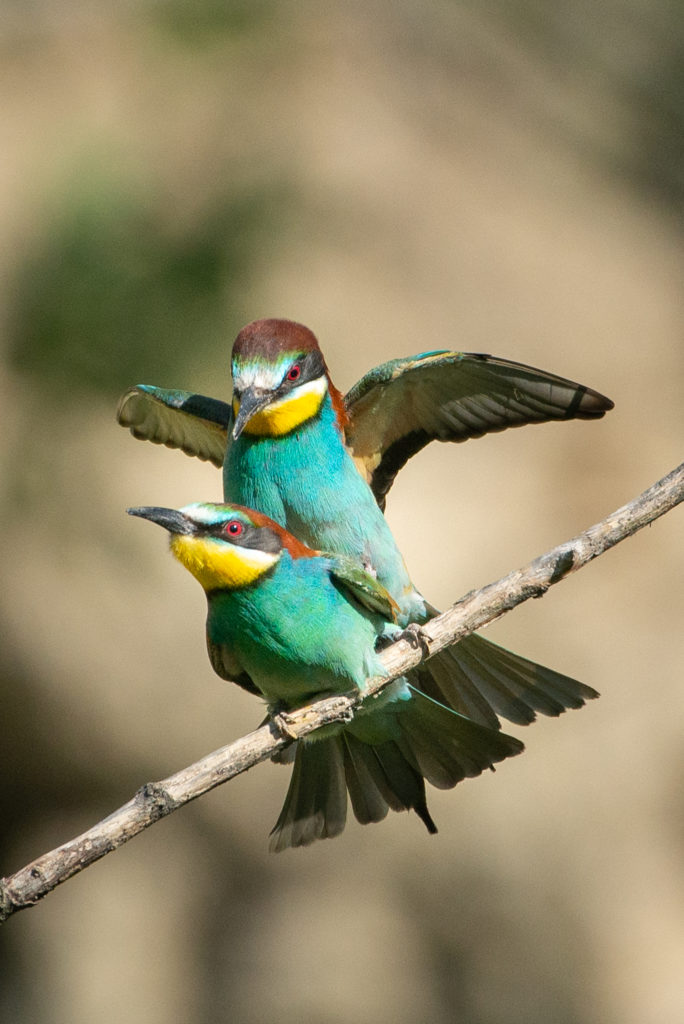
Comes September, the bee eaters will head South again. Many more of them.
The Austrian doctor and novelist Arthur Schnitzler published his novel “La Ronde” (Der Reigen) in 1879, causing a scandal for its frank description of sexuality. Or rather: it caused a riot. Not surprisingly, the book was banned. Then became a best seller. The Fifty Shades of Grey of its time. Passion is more colorful at Lake Neusiedl.
